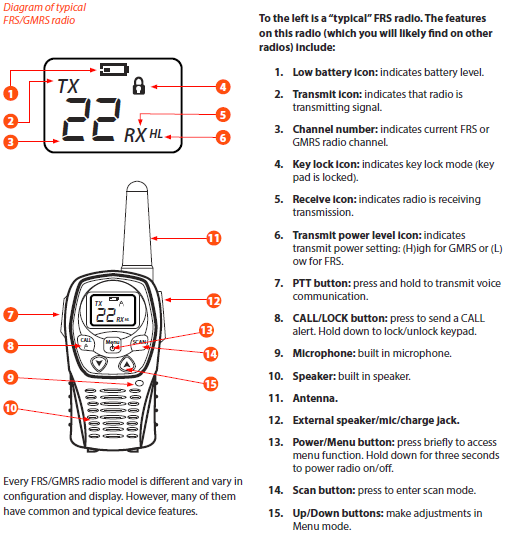FRS/GMRS Radio - Operating Conditions
Though the packaging of mobile radios often suggest ranges of up to 50 miles, this is almost unheard of in real-world situations. FRS/GMRS radios transmit and receive by line of sight. Therefore, ideal transmitting conditions would include an unobstructed line of sight between operators, from a high vantage point in good weather.
The meaningful (operational) difference between FRS and GMRS is: a volunteer operating on an FRS radio has access to less power (only ¹⁄₂ watt). This curtails the transmitting distance for radio signals. Nonetheless, this may be enough for a NET operating in a small area. Under ideal conditions, operating on FRS will transmit up to a mile. In average conditions, the range is typically between half and one-and-a-half miles.
Operating on GMRS gives a NET access to more power and therefore greater range: typically two miles, but as far as five miles.
In order to mitigate poor transmitting and receiving, operators should be aware of factors that can inhibit radio performance, such as:
- Topography (hills, tall formations)
- Weather (such as thick clouds)
- Electromagnetic pulse (EMP) interference
- Obstructions (dense forest/foliage, buildings)
- Large metal surfaces (transmitting from inside a car can shorten range)
